This is a month for vehicles, imagined vehicles, that take us straight out of our chaotic and worrisome now to “what if.”
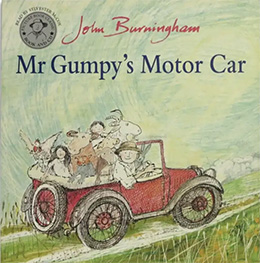 What if Mr. Gumpy decided to go for a ride, as he does in Mr. Gumpy’s Motorcar by John Burlingame. Our favorite benevolent mister from Mr. Gumpy’s Outing is back and going out for a drive. And of course, the passengers show up, wanting to come along — the children, the rabbit, cat, dog, pig, sheep, chickens, cow, and goat. “‘All right,’ said Mr. Gumpy, ‘but it will be a squash.’” All goes well until it starts to rain. The road gets muddy, the wheels spin, and Mr. Gumpy asks for help in pushing the car out.
What if Mr. Gumpy decided to go for a ride, as he does in Mr. Gumpy’s Motorcar by John Burlingame. Our favorite benevolent mister from Mr. Gumpy’s Outing is back and going out for a drive. And of course, the passengers show up, wanting to come along — the children, the rabbit, cat, dog, pig, sheep, chickens, cow, and goat. “‘All right,’ said Mr. Gumpy, ‘but it will be a squash.’” All goes well until it starts to rain. The road gets muddy, the wheels spin, and Mr. Gumpy asks for help in pushing the car out.
“‘Not me,’ said the goat. ‘I’m too old.’
‘Not me,’ said the calf, ‘I’m too young.’
‘Not us,’ said the chickens. ‘We can’t push.’
‘Not me,’ said the sheep. ‘I might catch a cold.’
‘Not me,’ said the pig, ‘I’ve a bone in my trotter.’
‘Not me,’ said the dog. ‘But I’ll drive if you like.’
‘Not me,’ said the cat.’ It would ruin my fur.’
‘Not me,’ said the rabbit. ‘I’m not very well.’
‘Not me,’ said the girl. ‘He’s stronger.’
‘Not me,’ said the boy. ‘She’s bigger.’”
But the mud got worse. And the tyres went deeper.
“‘Now we’re really stuck,’ said Mr. Gumpy.”
The passengers have a change of heart. “They pushed and shoved and heaved and strained and gasped and slipped and slithered and squelched.” Eventually, “the tyres gripped” and they climbed the hill. They drove home across the bridge and went for a swim.
Perhaps Mr. Gumpy and his car are an allegory for our time. What will happen if together, each in our own ways, we push and shove and heave and strain, gasp and slip, slither and squelch? Let’s try it.
 What would you do if you found an abandoned bus in your neighborhood? Maybe turn it into a traveling camper, or a giveaway sandwich shop, or a big little free library.
What would you do if you found an abandoned bus in your neighborhood? Maybe turn it into a traveling camper, or a giveaway sandwich shop, or a big little free library.
Writer and illustrator Loren Long encountered an abandoned bus while walking his dog and wanted to invent its story. He built a model neighborhood for the bus which almost filled a room in his house. (He talks about that on this YouTube video.)
At the beginning of Long’s The Yellow Bus children get on, “pitter patter, pitter patter, giggles, patter,” and the bus carries them “from one important place to another,” from home to school and back again. And these children “filled her [the bus] with joy.” In time the bus has another driver and another set of passengers, who “shuffle clunk, shuffle clunk, creak clunk,” and get on to the bus to go “from one important place to another.” And fill the bus with joy. The seniors paint the outside of the bus with flowers, smiling faces, and peace symbols. Eventually a new driver comes and drives the bus under a bridge and leaves it there. Long paints a scene from inside the empty bus and we can see the city skyline through the windows. “The yellow bus was empty.” This is a picture of loneliness. “Until one cold night they climbed in. Rustle, bump, rustle bump, brr, brr, bump.” Homeless people have come to shelter inside the bus. “And they filled her with joy.”
Again, the bus is moved. A tow truck driver tows the bus to the bank of a river. And the bus is alone.
Until “they climbed in. Clip clop, clip clop, maaah, maaah, maaah, clop. The yellow bus didn’t carry them from one important place to another. And still they filled her with joy.” The goats frolic around and in the bus. When a dam is built, and river water builds up, the bus is underwater. “The yellow bus was alone.” But “they swam in. Swish, swosh, swish, swosh. Glub, glub, swish. The yellow bus didn’t carry them from one important place to another. They drifted in and out and all around her. And they filled her with joy.”
Long’s illustrations are stunning. The bus and its inhabitants are the only colored objects on otherwise charcoaled pages so we cannot help but see whose story this is. I love the beauty of this book and the care with which Long made it. The scene with the fish swimming in and out of the bus’s windows is gorgeous, but there is a sadness about an abandoned bus underwater that is inescapable. This book calls us to care more for the lonely and abandoned — buses and humans.
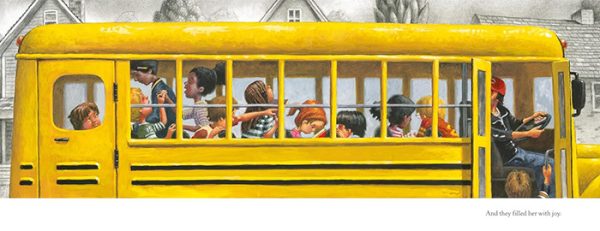
published by Roaring Brook Press, 2024
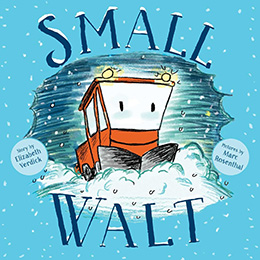 Small Walt by Elizabeth Verdick, illustrated by Marc Rosenthal, adds a new member to the canon of vehicular heroes that includes The Little Engine that Could and Mike Mulligan and his Steam Shovel. Small Walt is the smallest snow plow in the city fleet, always chosen last whenever the plows are needed. Only Gus offers to drive him when a big snow buries the streets, starting Walt up with a Vroom shrugga rugga room. “Try to keep up, small stuff,” calls Big Buck, the driver of a larger snowplow. Off Walt and Gus go on their route with Walt’s engine humming.
Small Walt by Elizabeth Verdick, illustrated by Marc Rosenthal, adds a new member to the canon of vehicular heroes that includes The Little Engine that Could and Mike Mulligan and his Steam Shovel. Small Walt is the smallest snow plow in the city fleet, always chosen last whenever the plows are needed. Only Gus offers to drive him when a big snow buries the streets, starting Walt up with a Vroom shrugga rugga room. “Try to keep up, small stuff,” calls Big Buck, the driver of a larger snowplow. Off Walt and Gus go on their route with Walt’s engine humming.
My name is Walt.
I plow and I salt.
They say I’m small.
But I’ll show them all.
They plow streets, icy bridges, dicey ramps. The storm worsens into a blizzard, but Walt plows on until they come to a big hill with huge drifts. Big Buck is behind them. Walt and Gus hesitate at the steepness of the hill and Gus asks if they should let Big Buck take over. But Small Walt plows on, with his engine thrumming “A plow and salter can never falter” as they climb, slip back, climb again, then finally make it to the very tip top of the big hill. But the way down is steep, and Walt hesitates again.
“You can do it, Walt,” Gus encourages.
Walt’s engine drums,
We’re Gus and Walt.
We plow and salt.
We’ll fight the snow.
Get ready — now Go!
Together Walt and Gus forge a path down the hill, with Big Buck following behind. Back at the plow yard, Big Buck admits, “The little guy did a better job than I thought.” Gus ties his scarf in a bow on Walt’s rear view mirror as “a blue ribbon for my buddy” and tells Walt, “See you tonight, snow fighter.” Filled with delicious sound effects and ending with the triumph of the “little guy,” this book is a delight for reading aloud and celebrating the power of determination — no matter one’s size.
(For another small vehicle’s triumph, this time a tugboat, read Lily Leads the Way by Margi Preuss.)
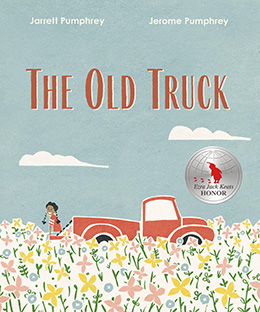 The Old Truck, written and illustrated by brothers Jarrett and Jerome Pumphrey, begins, “On a small farm, an old truck worked hard and long.” Art show the farmers and their small daughter also working hard and long on the farm. Finally “the old truck grew weary and tired. So the old truck rested.” As it rests the old truck dreams of sailing the seas, flying through the skies, and chasing stars. The old truck it grows older still as it rests, and the family grows older, too, as they continue to farm. We see the daughter helping out on the farm, fixing tractors, growing up until “On a small farm, a new farmer worked hard. The new farmer worked long.” She fixes up the old truck so that it is once again a working truck. This is a lovely example of art helping to carry the story as we see the small daughter of the original farmers grow up through the illustrations until she is the farmer with a small daughter of her own sitting on the tailgate of the restored truck.
The Old Truck, written and illustrated by brothers Jarrett and Jerome Pumphrey, begins, “On a small farm, an old truck worked hard and long.” Art show the farmers and their small daughter also working hard and long on the farm. Finally “the old truck grew weary and tired. So the old truck rested.” As it rests the old truck dreams of sailing the seas, flying through the skies, and chasing stars. The old truck it grows older still as it rests, and the family grows older, too, as they continue to farm. We see the daughter helping out on the farm, fixing tractors, growing up until “On a small farm, a new farmer worked hard. The new farmer worked long.” She fixes up the old truck so that it is once again a working truck. This is a lovely example of art helping to carry the story as we see the small daughter of the original farmers grow up through the illustrations until she is the farmer with a small daughter of her own sitting on the tailgate of the restored truck.
Illustrations are from stamps that the brothers created — the frantic faces of the chickens as the restored old truck vrooms along are particularly fun. And we love the sense of family passing along their farm and the work they love, generation to generation, with the old truck doing its part.
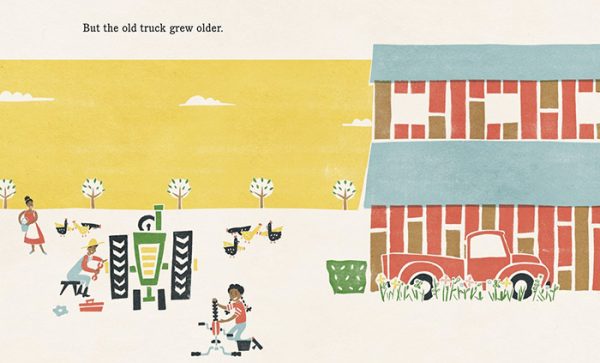
published by Norton Young Readers, 2020
 Bob Graham also wrote about an abandoned bus in A Bus Called Heaven. In fact, the story begins — before the title page — with one word. “Abandoned.” And it goes on, “The bus appeared one morning from a sea of traffic, right outside Stella’s house, where no bus should be.” On the bus was a hand-painted sign that said, “Heaven.”
Bob Graham also wrote about an abandoned bus in A Bus Called Heaven. In fact, the story begins — before the title page — with one word. “Abandoned.” And it goes on, “The bus appeared one morning from a sea of traffic, right outside Stella’s house, where no bus should be.” On the bus was a hand-painted sign that said, “Heaven.”
After the title page we learn “The bus brought change to Stella’s street. Traffic slowed where no traffic had slowed before. People stopped and talked together, just a little but they talked. Stella changed, too. She took her thumb from her mouth where it usually lived, and said, ‘Mommy that old bus is as sad as a whale on a beach.’ Then she whispered, ‘It could be … ours.’”
That afternoon when Stella’s dad came home from work he found an old bus “where the front yard used to be.” He said, “’The wheels stick out onto the sidewalk. There are sure to be regulations.’” But Stella had her own regulations and the bus stayed.
The bus settles in. Snails burrow under the tires, sparrows nest in the engine. Neighbors gather to clean up the bus while children play under it. They remove the garbage, wash and organize. When neighborhood boys see an opportunity for graffiti, Stella’s mother tells them to come back during the day and they can paint the whole bus. And they do, copying a picture Stella draws for them. People share their belongings with the bus — goldfish, comic book collections. Stella brings her table soccer (even though it only has one goalie). Soon the bus is a busy place. “Babies crawled. People laughed. Kids fought. Granddads scratched dogs. Meetings were planned and the Fingles showed their vacation pictures.”
Community grows around the old, now fixed-up bus. But one day a tow truck arrives to haul the bus away. “It’s against regulations,” says the tow truck driver. And he takes it to the junkyard. “This one’s for the crusher,” says the junkyard boss.
Stella saves the day and the bus by suggesting a game of table soccer. The boss can even have the only goalie. If Stella wins the bus will be saved. “Why should I play table soccer with you?” asks the junkyard boss. “Because there are sparrows nesting in the engine,” Stella replies. Stella scores ten times — and wins! With Stella and her mom steering, the neighbors push the bus out of the junkyard and to a vacant lot behind Stella’s house. That night “Music drifted high over the city and the grass was danced flat around a bus called Heaven. As a full moon rose, three snails slid safely back under the tires. And tomorrow Stella will see the sparrow chicks fly for the first time.”
We should all have such a bus as this bus called Heaven in our lives. And if we don’t have a bus, perhaps we can find a bench, or a table, or a shared picnic blanket, and dance the grass flat around it, celebrating together sharing and kindness and speaking our voices.

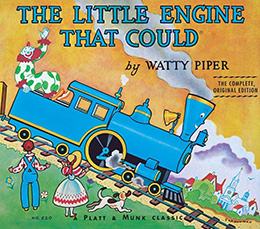
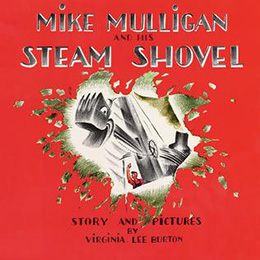
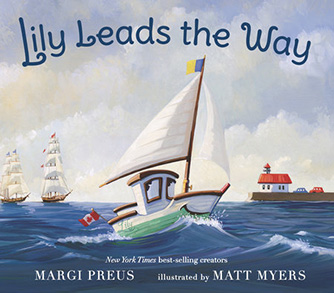
Just a wonderful tour through these delightful books! Thank you, Phyllis and Jackie!
Thank you, Phyllis and Jackie, for this lovely presentation of heartfelt books. I love Pig’s, “I’ve a bone in my trotter.”
Thanks, Jackie and Phyllis, for these fun books to share with young readers.